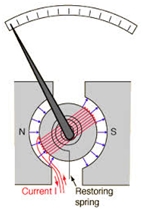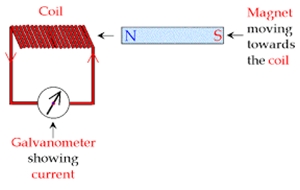Home › Electrical Engineering Forum › General Discussion › Measuring current with ammeters
- This topic has 1 reply, 2 voices, and was last updated 9 years, 12 months ago by
Anonymous.
-
AuthorPosts
-
2015/02/25 at 3:40 pm #11232
admin
KeymasterOne of our member, Nasir, has thought of another tutorial series which is “Measuring Instruments for Electrical Engineers”.
In this series, he will focus on several instuments one by one and explain how it works and how to use it.
Pretty exciting isn’t it? Now check the 1st tutorial on ammeters
What is an Ammeter?
The first question that needs to be answered according to rules before formally telling about the various functions of the device is that what it is basically used for. So an ammeter is a current measuring device that is used for measuring the amount of current flowing through a circuit.
Since we all know that electric current is measured in Amperes, which is the unit of current, so an ammeter is named after it since it measures the amount of amperes in the circuit.
How does an ammeter measure current?
An ammeter works on the basic principle that when a current changes in a circuit, it produces a magnetic field. There are various types of ammeters and the interesting fact is that all of them are based on this very same principle. Some of the commonly used types of ammeters are:
- Moving Coil Ammeters
- Moving Magnet Ammeters
- Electrodynamics Ammeters
Although the names are self-explanatory to quite an extent but a brief explanation about the working each of these commonly used ammeters is given below to help you guys understand them better.
Moving Coil Ammeters
A moving coil ammeter is more commonly also known as D’Arsonval galvanometer. It is known as moving coils because when the current passes through the coil of the ammeter the coil moves in the magnetic field produced by the passing current.
One important thing that should be noted about the moving coil ammeter is that the indicating needle of the ammeter at the displaying end moves in the opposite direction of the current due to the polar magnetic field present around the coil. We get the average value of the current through this thing. But since the average value of AC current is zero so this type of ammeter is not suitable for measuring AC currents but is instead used for measuring DC current values.
A moving coil ammeter is shown in the figure below:
Moving Magnet Ammeters
A moving coil ammeter is very much similar to a moving magnet ammeter except for the fact that is evident through the name that the magnet moves in this case in place of the coil. In a moving magnet ammeter the coil is fixed and mounted on the case and the magnet is responsible for moving the indicating needle of the ammeter to display the value of current.
One advantage of this configuration over moving coil ammeters is that we can make the coils of thick wire to let pass more heavy amounts of current since the coil does not need to move so its thickness does not need to be limited.
A moving magnet ammeter is shown in the figure below:
Electrodynamics Ammeters
This is also similar to the moving coil ammeter except for the fact that a permanent magnet is used in a moving coil ammeter whereas an electromagnet is used in place of a permanent magnet in this case.
This fact helps such that now we can measure the true RMS value of the current in place of the average value, so this ammeter can be used for measuring both AC and DC currents.
Connecting an Ammeter in the circuit
An ammeter is always connected in series in the circuit as shown below:
Applications
The ammeter can be used to measure both the DC and AC current.
- This comes in all sizes and can be used anywhere to measure the current like in electric heaters, cars, heavy and sensitive machinery, fridges etc.
- They are also used in other electrical devices for measuring the range of current that enters them. Many companies manufacturing electrical devices extensively use ammeters to measure the current range and input output flow of current in their product.
- Educational institutes also make use of ammeters in various laboratory experiments and to help students in the understanding of its functioning and working.
- When buildings are being constructed and their electrical map is being implemented, ammeters are an essential component to check the input and output currents at various sites to assure safety and protection.
Conclusion
In short it is one of the major devices which is extensively used in our everyday life without even the acknowledgement of a common man. Similarly there are other similar devices to measure the voltage, resistance, capacitance, inductance etc which are used along with ammeters to measure various parameters.
So in our next tutorials I am going to discuss each one of them one by one for better understanding and know-how of these measuring devices.
Nasir.
2015/02/28 at 7:18 pm #13653Anonymous
GuestI have been trying to come up with a electrical problem I have and would like input from your bloggers.
I have a customer with a barn style sliding glass door (floating door). I require a electrical connection to the glass panel. This poses a problem as a door loop is not suitable and there is no door jamb to install a contact. The voltage is 50 Volts AC and about 15watts. I have looked into a inductive power transfer unit but only can find DC units. I would have to run a inverter on both sides of the IPT. If anyone knows of a sliding track system that carries voltage or a IPT that would be more suitable I would appreciate the input. Thanks -
AuthorPosts
- You must be logged in to reply to this topic.
 One of our member, Nasir, has thought of another tutorial series which is “Measuring Instruments for Electrical Engineers”.
One of our member, Nasir, has thought of another tutorial series which is “Measuring Instruments for Electrical Engineers”.

